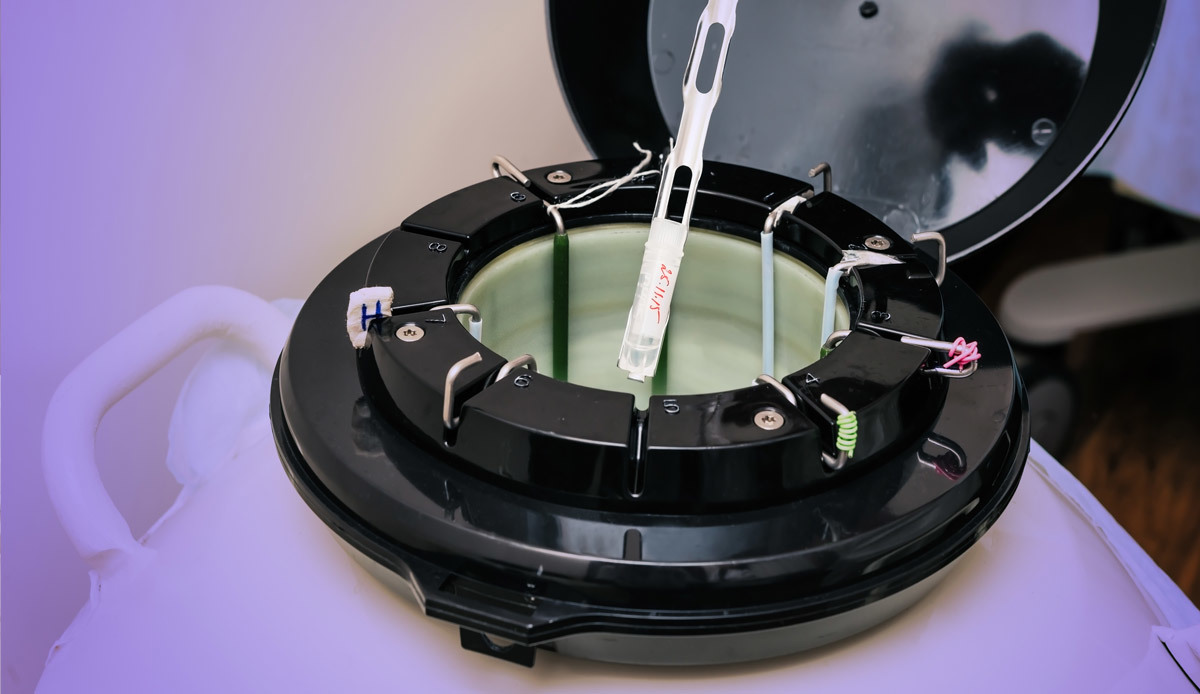Methods of Insemination
IUI (Intrauterine): The most common form of artificial insemination. Your doctor (or licensed health care provider) will insert thawed sperm directly into the uterus using a speculum and catheter. Inseminations may be timed based on a woman’s natural cycle, or in conjunction with medications intended to induce ovulation.
ICI (Intracervical): Most commonly performed at home, but can also be performed by a licensed care provider. Sperm is inserted into the vagina using a small, needleless syringe or a cervical cap. It is often recommended that a woman lie down for 15-30 minutes after the insemination to encourage the sperm to swim up into to uterus.
IVI (Intravaginal): More commonly referred to as ICI (above), IVI is another term to identify insemination that happens in the vagina, as is generally performed the same way as an ICI procedure.
IVF (In-vitro fertilization): In vitro fertilization is a process by which fertilization occurs outside of the body, or in vitro. IVF may involve any combination of your own eggs and sperm, or donor eggs and sperm. After egg and sperm cells have been harvested or obtained, they are brought together in a laboratory environment to allow the sperm to fertilize the eggs. About 2 to 5 days after fertilization, one or more of the best fertilized eggs are inserted into the uterus using a catheter. The remaining fertilized eggs may be cryopreserved for future use.
ICSI (Intracytoplasmic sperm injection): Like IVF, ICSI is a procedure in which an individual sperm cell is introduced into an egg cell in a laboratory environment.
What Vial Type Do I Need?
What vial type you need is largely dependent on what type of procedure you’re having done.
IUI procedures: Requires pre-washed, IUI-ready vials. Standard vials with a minimum motile cell count of 20 million/ml are recommended, although a lower cell count vial can be used with your doctor’s approval.
ICI/IVI procedures: Either a standard IUI (washed) or ICI (unwashed) vial can be used. Many prefer unwashed, ICI vials for this procedure as it is thought that the extra seminal fluid present in the sample can help sperm travel up into the uterus. Based on cell count alone, there is no reason to believe that one vial type (washed vs. unwashed) is more successful for an ICI procedure.
IVF and ICSI: Any vial type can be used for IVF and ICSI, although ART vials are a great, cost-saving option for these procedures. Your doctor may prefer you buy unwashed (ICI) vials, as they may prefer to wash the sperm in their own laboratory prior to the procedure, although pre-washed vials can also be used.
I am Planning to Do a Home Insemination, What Type of Vial Should I Use?
Home inseminations are generally ICI procedures, so either an IUI or ICI vial can be used.
What is Included in the Shipping Tank? Is There Anything Else I Need For My Home Insemination?
Seattle Sperm Bank includes a home insemination kit for any residential delivery or pick-up, at no extra charge. The home insemination kit includes a needle-less syringe, thawing instructions (more information HERE), which is all you need for the inseminations. Just follow the instructions, and contact us if you have any questions.
What Kind of Procedure is Right For Me?
Women should consult with their physicians about the insemination method that is most appropriate for their circumstances. We at SSB are here to provide our insight and guidance to ensure you have the right vials, for the right donor, at the right time!


